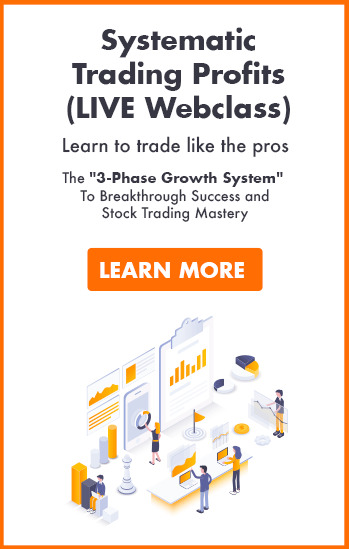Stop loss orders are a must-have for traders. They help you limit losses by automatically selling or buying securities when they hit a specific price. Here’s why they matter:
- Why use them? Markets are volatile, and emotions can lead to poor decisions. Stop loss orders keep your trading disciplined.
- Types: Fixed stop loss, trailing stop loss, and volatility-based stop loss are the main options. Each suits different strategies and market conditions.
- How they work: You set a price level, and your broker executes the trade when the price is hit. This can be done on platforms like MetaTrader or IG, which offer advanced features like trailing stops or guaranteed stops.
- Key tips: Use tools like the Average True Range (ATR) for better placement, and always stick to the 1% rule – risk no more than 1% of your capital per trade.
Trading in Singapore is booming, with SGD 1.35 billion in daily trading volume in 2024. Whether you’re trading DBS shares or cryptocurrencies, stop loss orders are essential for managing risk in this fast-paced market.
Main Types of Stop Loss Orders
In Singapore’s fast-paced trading environment, picking the right stop loss order is a key part of managing risk. Different types of stop loss orders are better suited to specific market conditions and trading strategies. Let’s break down the three main types commonly used by traders in Singapore.
Fixed Stop Loss
A fixed stop loss is the simplest and most straightforward option. You set a specific price level, and if your stock hits that price, it’s automatically sold at the next available market price. For instance, if you buy DBS shares at SGD 35.00 and set a fixed stop loss at SGD 31.50, your potential loss is capped at 10% per share. Should DBS fall to SGD 31.50, your broker will sell the shares automatically.
This type of stop loss is great for beginners since it’s easy to understand and doesn’t require constant market monitoring. It helps you stick to your risk limits. However, the predictability of fixed stop losses can be a downside in volatile markets, where prices might briefly dip before recovering, potentially triggering an unnecessary sale.
Trailing Stop Loss
A trailing stop loss offers more flexibility by adjusting as the stock price rises. Unlike a fixed stop, it moves upward with the market, locking in gains while still protecting you from large losses.
Here’s how it works: imagine you buy Singtel shares at SGD 10.00 and set a trailing stop loss at 10% below the current price. If the price drops to SGD 9.00, your shares are sold, as the 10% threshold is reached. But if Singtel climbs to SGD 15.00, the trailing stop adjusts to SGD 13.50 (10% below the new high). If the price then falls to SGD 13.50, the sale is triggered, securing your profit.
Trailing stops are especially useful in trending markets, making them ideal for growth stocks or during bullish phases when you want to ride the momentum while safeguarding your gains. However, it’s important to consider the stock’s historical volatility and current conditions. In highly volatile markets, a narrow trailing stop might trigger too soon, so a wider margin could be more effective. Keep in mind that trailing stops aren’t foolproof and may face slippage during rapid market swings.
Volatility-Based Stop Loss
Volatility-based stop losses take a different approach by setting stop levels based on recent price movements and overall market volatility. Instead of using a fixed percentage, these stops adapt to how much the stock typically fluctuates.
This method often relies on technical indicators like the Average True Range (ATR) or standard deviation to calculate the distance for the stop loss. For example, during stable market periods, the stop might be closer to the current price. In contrast, during volatile times, the stop is set further away to avoid being triggered by normal price swings.
Volatility-based stops are highly adaptable, making them a good choice for stocks with varying levels of volatility, such as banking shares. For instance, during quiet periods, tighter stops might suffice, but during earnings announcements or regulatory updates, wider stops may be necessary. While this approach helps avoid premature exits and aligns with market conditions, it requires a deeper understanding of technical analysis and access to platforms that support advanced order types.
Each of these stop loss types offers unique benefits, allowing traders to customise their risk management strategies to fit their trading style and market conditions.
How Stop Loss Orders Work: Process and Execution
For traders navigating Singapore’s fast-paced market, understanding the mechanics of stop loss orders is essential. A clear grasp of how these orders work can help you make smarter decisions and steer clear of common trading mistakes. Let’s break down the steps and nuances that come into play when you use stop loss orders on local platforms.
Placing Stop Loss Orders on Singapore Trading Platforms
Placing a stop loss order on platforms in Singapore is straightforward. Start by selecting the stop loss option on the order entry screen.
Choose an SGX-listed security, such as DBS, Singtel, or CapitaLand. Enter the size of your position and select the “Stop Loss” feature. Then, set your stop price – the level at which your order will be triggered. For example, if you hold CapitaLand shares at SGD 3.50 and want to cap your losses at 10%, you’d set your stop price at SGD 3.15.
Before submitting, most platforms will prompt you to confirm the order details. After activation, the system monitors the market, displaying statuses like ‘Working’ or ‘Active’ until the order is triggered or cancelled. To stay on top of your trades, keep an eye on market conditions and adjust your stop levels as necessary.
Once your stop loss order is in place, it’s important to understand how its execution might unfold.
Stop Loss vs Stop-Limit Orders
Knowing the distinction between stop loss and stop-limit orders can make a big difference in managing your trading risks. While both aim to limit losses, they function differently.
A stop loss order becomes a market order as soon as the stop price is hit. This ensures execution, but the final price may differ due to market fluctuations. For instance, if you set a stop loss at SGD 25.00 for your OCBC shares and the price falls to that level, your broker will sell at the next available market price, which might be slightly lower.
On the other hand, a stop-limit order combines a stop price with a limit price. When the stop price is reached, it triggers a limit order instead of a market order. Using the same OCBC example, you could set a stop price at SGD 25.00 and a limit price at SGD 24.80. This means your shares will only sell if someone is willing to pay at least SGD 24.80.
| Feature | Stop Loss Order | Stop-Limit Order |
|---|---|---|
| Execution | Guaranteed execution (with slippage) | Execution not guaranteed |
| Price Control | No control over final price | Ensures a minimum price is met |
| Best For | Quick exits in volatile markets | Stable markets with price control |
| Risk | Slippage risk | Risk of non-execution |
If you need certainty that your position will close, especially during volatile times, a stop loss order is the way to go. However, if maintaining a specific price is more critical, a stop-limit order might be a better fit.
Factors That Affect Stop Loss Execution
Several factors can influence how well your stop loss orders perform. Market volatility is a key concern, especially during major news announcements or earnings releases that impact SGX-listed stocks.
Slippage is another challenge. This happens when the market moves past your stop price before your order is executed. In particularly turbulent times, prices can gap down, leading to slippage.
Liquidity also plays a big role. Stocks with higher trading volumes, like DBS or Singtel, generally see smoother execution. In contrast, less liquid stocks may have wider spreads, increasing the likelihood of slippage. For larger orders, you might encounter partial fills or less favourable pricing.
Technical delays can occasionally interfere with execution too. This is more likely during peak trading hours, such as market open or close, when systems are processing a high volume of orders.
Some brokers offer Guaranteed Stop Loss Orders (GSLOs) to eliminate slippage risk. These ensure your order is executed exactly at your stop price, but they usually come with an added cost. Consider whether the premium aligns with your risk tolerance.
When setting stop levels, factor in these considerations. In volatile markets, placing your stop further from the current price can help prevent premature triggering. For less liquid stocks, account for wider spreads to better manage your risk-reward balance. A helpful guideline is the 1% rule – limit your risk to no more than 1% of your total trading capital on a single trade.
Setting Effective Stop Loss Orders for Systematic Trading
Crafting effective stop loss orders is a vital part of protecting your trading capital while staying flexible enough to handle market fluctuations. To do this well, you’ll need a mix of technical analysis, percentage-based rules, and an understanding of market volatility. In Singapore’s trading environment, these strategies can be fine-tuned for optimal results.
Methods for Setting Stop Loss Levels
Technical analysis is a cornerstone of many stop loss strategies. Tools like the Average True Range (ATR) can help you measure normal market volatility, allowing you to set stops that account for typical price movements. Additionally, identifying key support and resistance levels can provide valuable guidance. For example, if you’re buying near a support level, placing your stop just below it can protect you from minor price dips while keeping you in the trade if the support holds.
Percentage-based approaches offer a straightforward way to manage risk. Many traders in Singapore use the 1–2% rule, which limits the risk on any single trade to a small percentage of their total capital. This method is easy to scale with your account size and ensures consistent risk management across trades.
Volatility-based strategies adjust stop loss levels to reflect changes in market conditions. For instance, during periods of heightened volatility – like the significant drop in Bitcoin’s value in March 2022 – setting wider stops can help you avoid being prematurely stopped out. This approach ensures that your trades have room to breathe during turbulent times.
By combining these methods – such as using ATR, Fibonacci retracements, and percentage-based rules – you can create a well-rounded strategy. When multiple indicators align, your stop loss placements are likely to be more reliable and effective.
Stop Loss Strategies for Different Asset Classes
Different asset classes come with varying levels of volatility, and your stop loss strategy should reflect these differences. For instance:
- Cryptocurrencies are known for their extreme price swings, often requiring wider stops to account for their volatility. Without this adjustment, you risk being stopped out too early.
- Commodities can also experience significant price changes, often driven by external factors like supply chain disruptions. This makes it essential to set stops that accommodate these unpredictable movements.
- Currencies – especially major ones – tend to trade within narrower daily ranges, allowing for tighter stops.
For Singapore Exchange (SGX)-listed equities, the approach can vary depending on the type of stock. Blue-chip stocks like DBS, OCBC, and UOB typically experience lower volatility, making tighter stops more suitable. On the other hand, growth stocks or smaller-cap shares often require wider stops to account for larger price fluctuations.
Tailoring your stop loss levels to each asset class not only improves your risk management but also aligns with the specific characteristics of the instruments you’re trading.
Using Stop Loss Orders in Systematic Trading Plans
Incorporating stop loss strategies into a systematic trading plan is essential for maintaining discipline and objectivity. Systematic trading relies on rules-based strategies that help remove emotional decision-making – a common pitfall for traders. Research shows that many traders lose money due to emotional choices.
To ensure your stop loss levels fit within your overall risk framework, tools like position sizing calculators can be invaluable. For instance, limiting your risk to 1–2% of your capital and targeting a minimum risk–reward ratio of 1:2 can help you stay consistent and disciplined.
Backtesting is another critical step. By testing your stop loss strategies against several years of historical data, you can evaluate how they perform under different market conditions. Singapore’s market offers unique opportunities for backtesting, with its distinct trading phases such as the Pre-Open and Closing Routine periods.
Collin Seow Trading Academy’s Systematic Trader Program highlights the importance of having predefined rules for entering and exiting trades, including stop loss placements. Their free Market Timing 101 E-Course is a great resource for learning how to identify optimal entry and exit points, helping traders avoid setting stops based on guesswork or emotion. Keeping a trading journal to document your stop loss placements, the reasoning behind them, and the outcomes can further refine your approach.
Master Systematic Trading with Collin Seow
Learn proven trading strategies, improve your market timing, and achieve financial success with our expert-led courses and resources.
sbb-itb-466c9b0
Advanced Tools and Local Considerations for 2025
Singapore’s financial landscape continues to evolve, offering traders cutting-edge tools for managing risk. As the third-largest forex trading hub globally, the country processes an impressive US$929 billion in daily forex and over-the-counter derivatives trading volume. This thriving market has driven the development of advanced trading features and regulatory updates, both of which influence how stop loss orders are utilised.
Advanced Stop Loss Features on Trading Platforms
Modern trading platforms in Singapore now go beyond basic stop loss options, introducing tools that cater to a variety of trading needs. One standout feature is guaranteed stops, which ensure your order executes at the set price, even during volatile market gaps, usually for a small premium.
Popular platforms like MetaTrader 4, its successor MetaTrader 5, cTrader, ProRealTime, and Capitalise.ai offer a range of advanced tools. These include trailing stops, guaranteed stops, and even no-code automation for traders who want sophisticated strategies without needing programming expertise.
“Algorithmic trading (automated trading) is one of the strongest features of MetaTrader 4, allowing you to develop, test, and apply Expert Advisors and technical indicators”.
For traders seeking tailored solutions, cTrader is ideal for ECN brokers and detailed strategies, while ProRealTime supports advanced technical analysis without requiring VPS hosting. Capitalise.ai, on the other hand, simplifies automation, making it accessible to those without coding experience.
| Platform | MAS Regulated | Spread (EUR/USD) | Key Stop Loss Features |
|---|---|---|---|
| OANDA | ✓ | From 0.6 pips | Advanced trailing stops, guaranteed stops |
| FOREX.com | ✓ | From 0.5 pips | Automated stop management, advanced charting |
| IG | ✓ | From 0.6 pips | Guaranteed stops, risk management tools |
| CMC Markets | ✓ | From 0.7 pips | Next-gen platform with smart stops |
When choosing a platform, consider execution speed and low spreads. These factors are critical for automated strategies, as even minor delays can lead to slippage when stop loss orders are triggered in fast-moving markets. The combination of these features and Singapore’s regulatory framework creates a robust environment for risk management.
Regulatory and Tax Considerations
Alongside technological advancements, regulatory updates in Singapore shape trading strategies. The revised MAS AML/CFT guidelines, effective from 1 July 2025, outline stricter rules for combating money laundering and proliferation financing. These include enhanced customer due diligence requirements and tighter deadlines for filing suspicious transaction reports – five business days in general, or one day for cases involving sanctioned parties.
MAS also mandates that funds be held in segregated accounts, ensuring added security for traders. For tax purposes, whether trading profits are classified as investment or trading income can impact your liabilities, so maintaining detailed records of your strategies and decisions is essential.
Recent developments include StoneX Group’s launch of Forex.com in Singapore in April 2025, a significant step in its APAC expansion. Similarly, CMC Markets introduced CMC Invest in 2023, offering non-leveraged trading of physical shares and ETFs under MAS regulation.
Collin Seow Trading Academy‘s Resources for Stop Loss Mastery

To master stop loss strategies, traders must combine systematic risk management with disciplined psychology. Studies reveal that fear and greed account for 65% of trading mistakes, while trading psychology influences 80% of market success.
Collin Seow Trading Academy offers programmes that equip traders with the skills to manage stop loss orders effectively. The Systematic Trader Program focuses on rule-based strategies to eliminate emotional interference, a common pitfall when setting and adjusting stops. This approach is invaluable for maintaining consistency, especially in volatile markets.
For those looking to refine their skills further, the Market Timing 101 E-Course teaches how to identify optimal entry and exit points, directly improving stop loss placement. Additionally, The Systematic Trader v.2 book blends theory with practical applications, covering risk management, position sizing, and trade selection.
“By reviewing entries in a comprehensive trading journal, one which includes all the aspects of importance regarding a trade, the trader can learn to distance emotions and trade rigorously” – Dr. Janice Dorn, Psychiatrist and Expert in Trading Psychology.
The academy also offers the Systematic Trading Profits programme, which introduces a structured 3-Phase Growth System. This framework emphasises systematic decision-making over emotional reactions. Live webinars and video content provide real-time market insights, helping traders adapt their stop loss strategies to current conditions.
Through a disciplined approach, the academy helps traders view stop loss orders not as setbacks but as essential tools for long-term success. This mindset is crucial for navigating Singapore’s dynamic trading environment, where consistency and risk management go hand in hand.
Conclusion: Mastering Stop Loss Orders in 2025
Stop loss orders have grown far beyond their original purpose as simple tools for managing risk. Today, they are essential for achieving consistent success in systematic trading. In Singapore’s fast-paced trading scene, understanding and using these tools effectively not only protects your capital but also helps maintain steady returns.
Experienced traders often limit their risk to just 1% of their account balance per trade. However, statistics reveal that 90% of traders lose money due to a lack of discipline, with emotional decision-making causing 65% of trading mistakes that lead to losses. The difference between a disciplined trader and an emotional one often comes down to having a clear exit strategy in place before entering a trade.
Whether you’re employing fixed stops for stable markets, trailing stops to ride trends, or volatility-based stops to handle unpredictable conditions, the most important factor is to decide on your exit plan before you take a position. This proactive approach is what sets successful traders apart.
Singapore offers an ideal environment for implementing these strategies, thanks to its strong regulatory oversight and advanced trading platforms. Brokers regulated by the Monetary Authority of Singapore are continually improving their risk management tools, giving traders access to features that support disciplined execution. This environment not only encourages systematic trading but also highlights the value of ongoing learning.
Disciplined traders who combine systematic rules with proper risk management often achieve win rates of 55–65%, while risking only 1–2% per trade. For those looking to deepen their skills, the Collin Seow Trading Academy offers valuable resources. The Systematic Trader Program focuses on rule-based strategies to remove emotional biases, while the Market Timing 101 E-Course teaches precise entry and exit timing. For a more comprehensive approach, The Systematic Trader v.2 blends theory with hands-on practice and includes live webinars for real-time market insights.
FAQs
What type of stop loss order should I use for my trading strategy in Singapore’s dynamic market?
Choosing the Right Stop Loss Order in Singapore’s Market
In Singapore’s dynamic trading scene, picking the right stop loss order boils down to your trading goals and how much risk you’re willing to take on.
If you want absolute certainty that your position closes at your chosen stop price, even during sudden market gaps, consider Guaranteed Stop-Loss Orders (GSLO). These are especially handy in highly volatile markets, as they protect you from slippage – when the actual execution price differs from your intended stop price.
On the other hand, stop-limit orders give you more control. With these, you set both a trigger price and a limit price. This can be useful during rapid price swings. However, there’s a catch: if the market price moves beyond your set limit price, your order might not go through.
For traders who value execution certainty, GSLOs often stand out as the better option, particularly in unpredictable market conditions.
What are the risks and advantages of using volatility-based stop loss orders compared to fixed or trailing stop loss orders?
Volatility-based stop loss orders are designed to adjust according to market fluctuations, offering a more adaptable approach during unpredictable times. This flexibility can help traders remain in trades longer, potentially allowing them to capitalise on larger gains. However, the downside is that these orders might backfire in highly volatile markets, where sudden price swings could unexpectedly trigger the stop and lead to larger losses.
In contrast, fixed and trailing stop loss orders offer a more straightforward and predictable way to manage risk. They’re simpler to set up and follow, but their rigid nature means they might not keep up with rapid market shifts. This could result in missing out on potential gains or exiting profitable trades prematurely.
Volatility-based stops work well in fast-moving markets but require careful fine-tuning to strike the right balance between flexibility and risk management. Ultimately, traders should evaluate their risk appetite and strategy before choosing the type of stop loss order that aligns best with their goals.
How can I use stop loss orders to manage risk and stay disciplined in trading?
Incorporating stop loss orders into your trading strategy is a smart way to manage risk and stay disciplined. Start by establishing specific rules for setting stop losses. These can be based on factors like technical indicators, key price levels, or market volatility. The key is to stick to your plan and avoid making emotional decisions when the market gets unpredictable.
You can also use automated trading tools to handle stop loss orders. This takes the emotion out of the equation and keeps your approach consistent. Make it a habit to review and adjust your stop loss levels regularly to align with current market trends and your trading strategy. This method not only protects your investments but also lays the groundwork for steady, long-term success.












